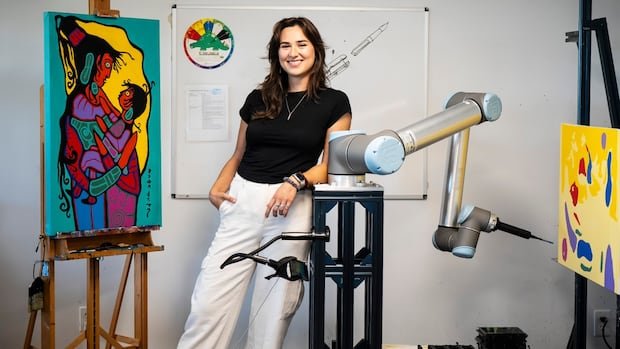Renowned Indigenous artist Norval Morrisseau and his close friend Cory Dingle were taken aback while perusing a Vancouver gallery around 1993 when they encountered a painting attributed to Morrisseau himself that he had never seen or painted. Despite the discovery, Morrisseau’s response was philosophical, acknowledging the impossibility of controlling every instance of misattribution in the world.
Morrisseau, a pioneering self-taught artist recognized for his distinctive pictographic style, was a trailblazer among a group of seven prominent First Nations and Native American artists. As the first Indigenous artist to exhibit work in a contemporary Canadian gallery, Morrisseau’s paintings now command high prices, with some selling for millions.
However, the incident with the misattributed painting foreshadowed a larger issue. In the years following Morrisseau’s passing in 2007, over 6,000 counterfeit paintings have been uncovered, resulting in staggering losses of $100 million for Morrisseau’s estate and leading to what authorities have labeled the most significant art fraud in global history.
To combat the proliferation of fakes, Morrisseau’s estate, overseen by Dingle, joined forces with two art enthusiasts to develop an artificial intelligence tool dubbed “Norval AI” approximately three years ago. This software can scrutinize artworks to assess the likelihood of their authenticity as genuine Morrisseau pieces, offering a crucial aid in the ongoing battle against art fraud.
Despite the advancements in fraud detection, the estate faced challenges in identifying increasingly sophisticated forgeries, prompting the utilization of innovative technology. Chloë Ryan, an engineering student with a passion for creating large-scale abstract paintings, founded Acrylic Robotics, a company leveraging technology to produce paintings under an artist’s guidance.
Through a meticulous process involving the use of Amazon Web Services software and robotic arms, Acrylic Robotics can replicate artworks with remarkable precision. This technological breakthrough provided the estate with a valuable tool for validating Norval AI’s assessments.
As advancements continue to refine the accuracy of reproductions, concerns linger about potential misuse of the technology and safeguarding artists’ interests. Collaborative efforts are underway to embed unique markings in replicas to prevent their misrepresentation as original works, ensuring responsible dissemination to art enthusiasts and institutions seeking to appreciate Morrisseau’s legacy.

